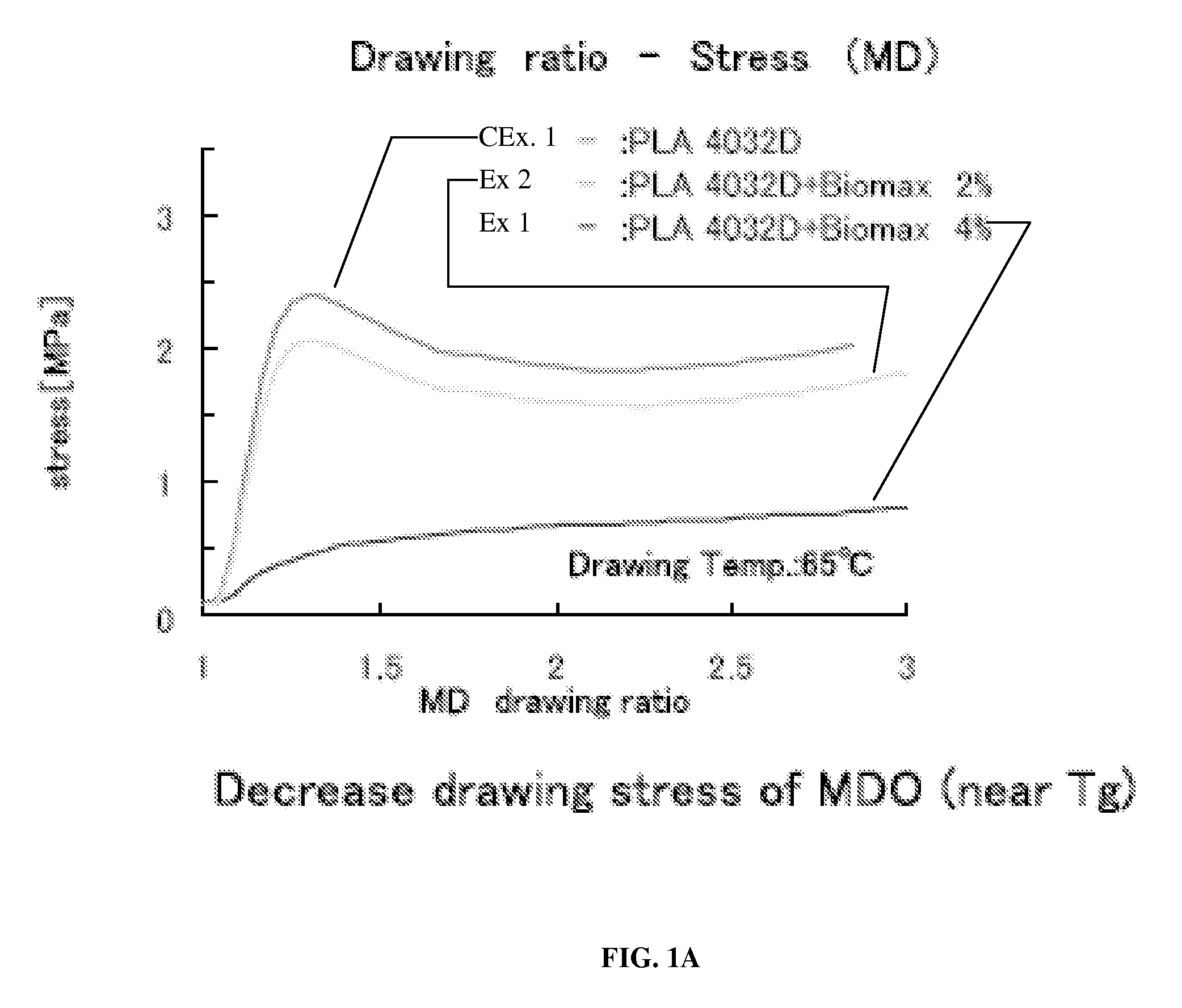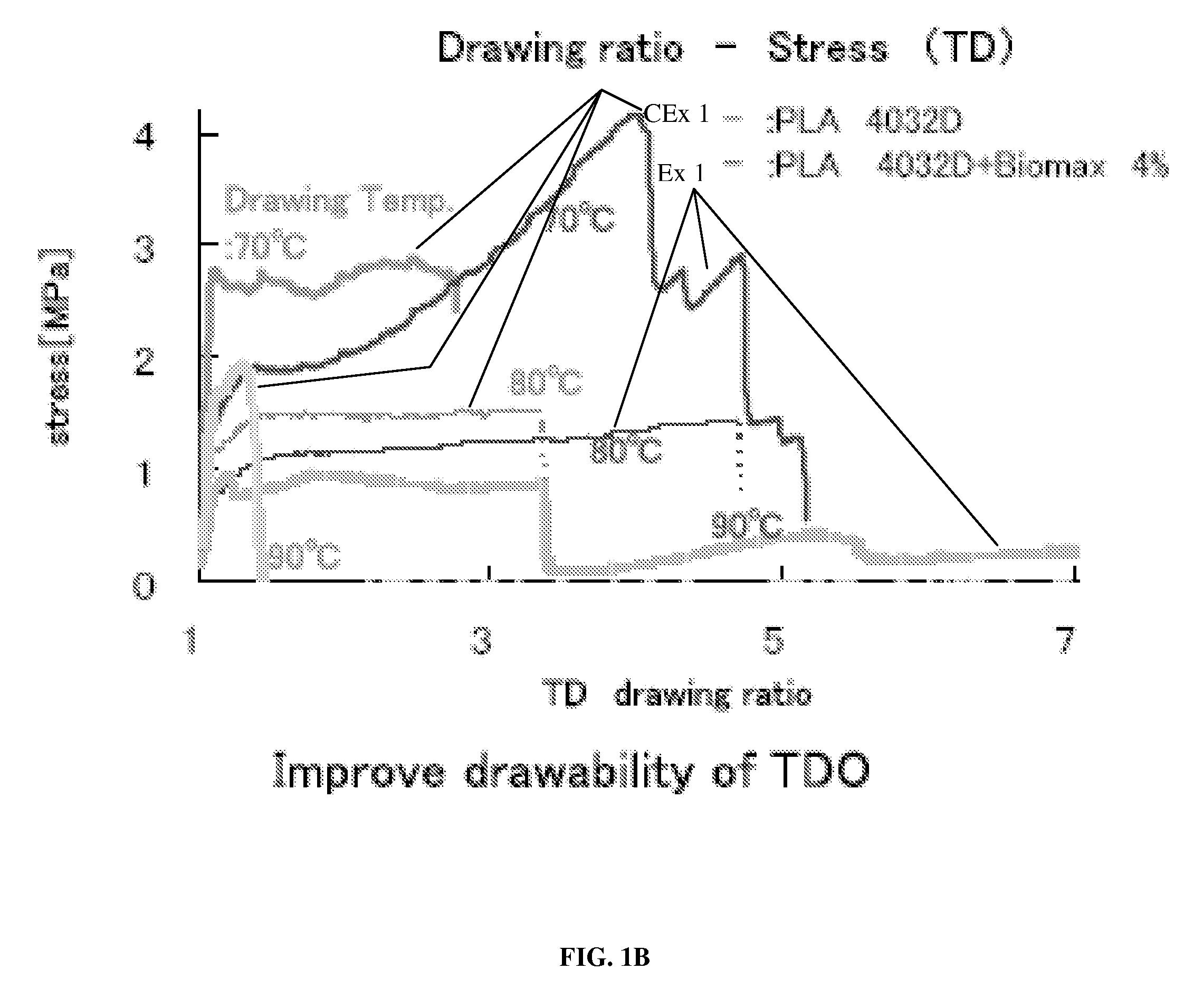Process to produce biaxially oriented polylactic acid film at high transverse orientation rates
a polylactic acid film, high transverse orientation technology, applied in the direction of transportation and packaging, other domestic articles, synthetic resin layered products, etc., can solve the problems of ineffective production of bopla films, film breakage is very prone to happen, and the biaxial orientation rate of bopla films is limited
- Summary
- Abstract
- Description
- Claims
- Application Information
AI Technical Summary
Benefits of technology
Problems solved by technology
Method used
Image
Examples
example 1
[0064]A 2-layer coextruded biaxially oriented PLA film was made using sequential orientation on a 1.5 meter wide tenter frame line, the film includes a core layer substantially of Natureworks® 4032D at about 96 wt % of the core layer and dry-blended with about 4 wt % of DuPont Biomax® 120 ethylene-acrylate copolymer. The coextruded heat sealable skin layer includes Natureworks® 4060D at about 94 wt % of the skin layer. An antiblock masterbatch of 5 μm silica at a loading of 5 wt % of the masterbatch in a carrier resin of amorphous PLA (4060D) was added to the coextruded heat sealable skin layer at about 6 wt % of the skin layer for an effective antiblock loading of 3000 ppm. This antiblock masterbatch was provided by Clariant Oman® bl-698585.
[0065]The total thickness of this film substrate after biaxial orientation was ca. 80 G or 0.8 mil or 20 μm. The thickness of the respective heat sealable resin layer after biaxial orientation was ca. 6 G (1.5 μm). The thickness of the core laye...
example 2
[0066]A process similar to Example 1 was repeated except that the core layer included about 66 wt % of crystalline 4032D, 30 wt % of amorphous PLA 4060D, and 4 wt % of ethylene-acrylate copolymer. The transverse orientation rate obtained was 10.6×.
example 3
[0067]A process similar to Example 1 was repeated except that the core layer included about 81 wt % of crystalline 4032D, 15 wt % of amorphous PLA 4060D, and 4 wt % of ethylene-acrylate copolymer. The transverse orientation rate obtained was 9.0×.
PUM
| Property | Measurement | Unit |
|---|---|---|
| wt % | aaaaa | aaaaa |
| wt % | aaaaa | aaaaa |
| wt % | aaaaa | aaaaa |
Abstract
Description
Claims
Application Information
 Login to View More
Login to View More - R&D
- Intellectual Property
- Life Sciences
- Materials
- Tech Scout
- Unparalleled Data Quality
- Higher Quality Content
- 60% Fewer Hallucinations
Browse by: Latest US Patents, China's latest patents, Technical Efficacy Thesaurus, Application Domain, Technology Topic, Popular Technical Reports.
© 2025 PatSnap. All rights reserved.Legal|Privacy policy|Modern Slavery Act Transparency Statement|Sitemap|About US| Contact US: help@patsnap.com



